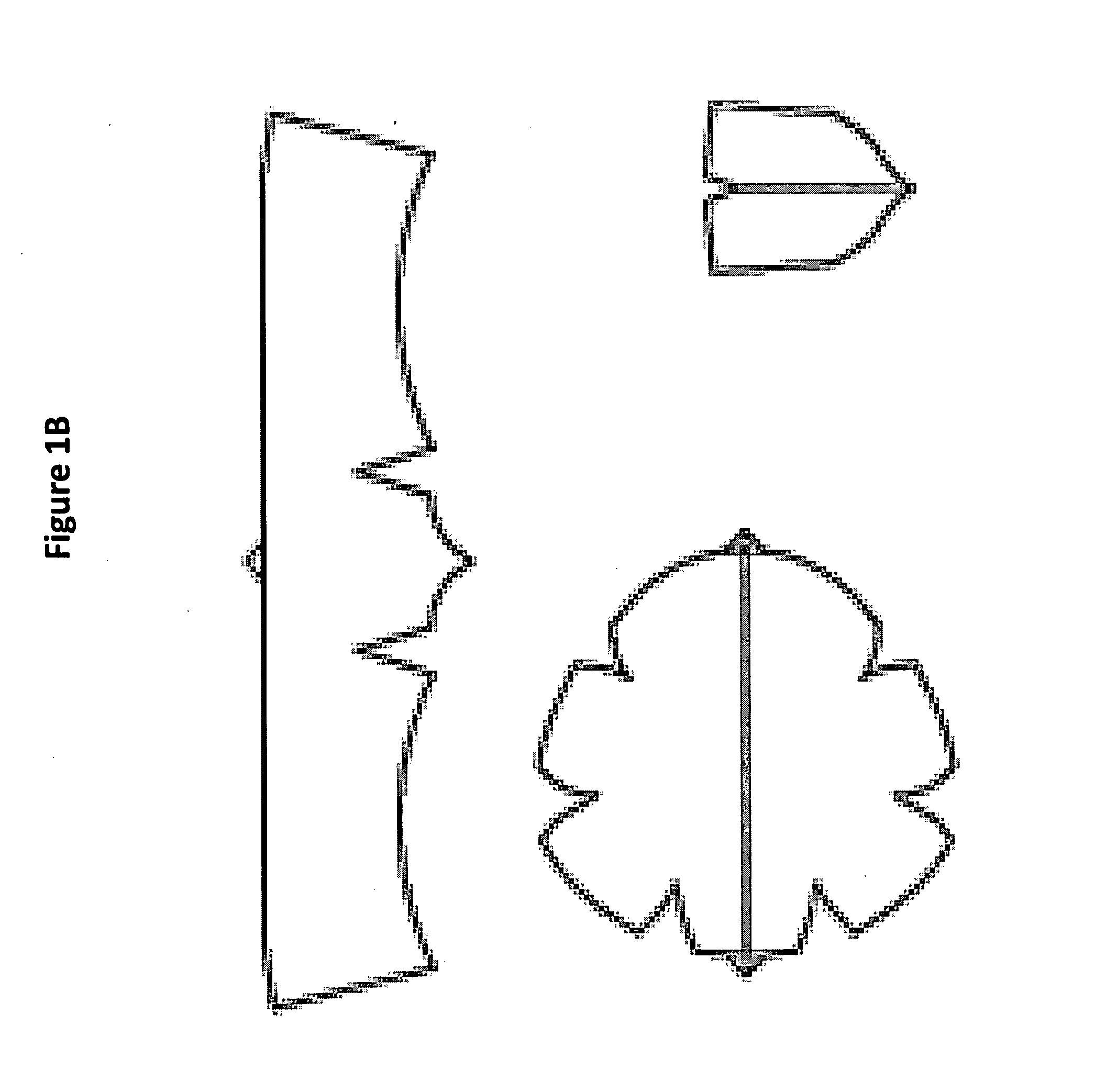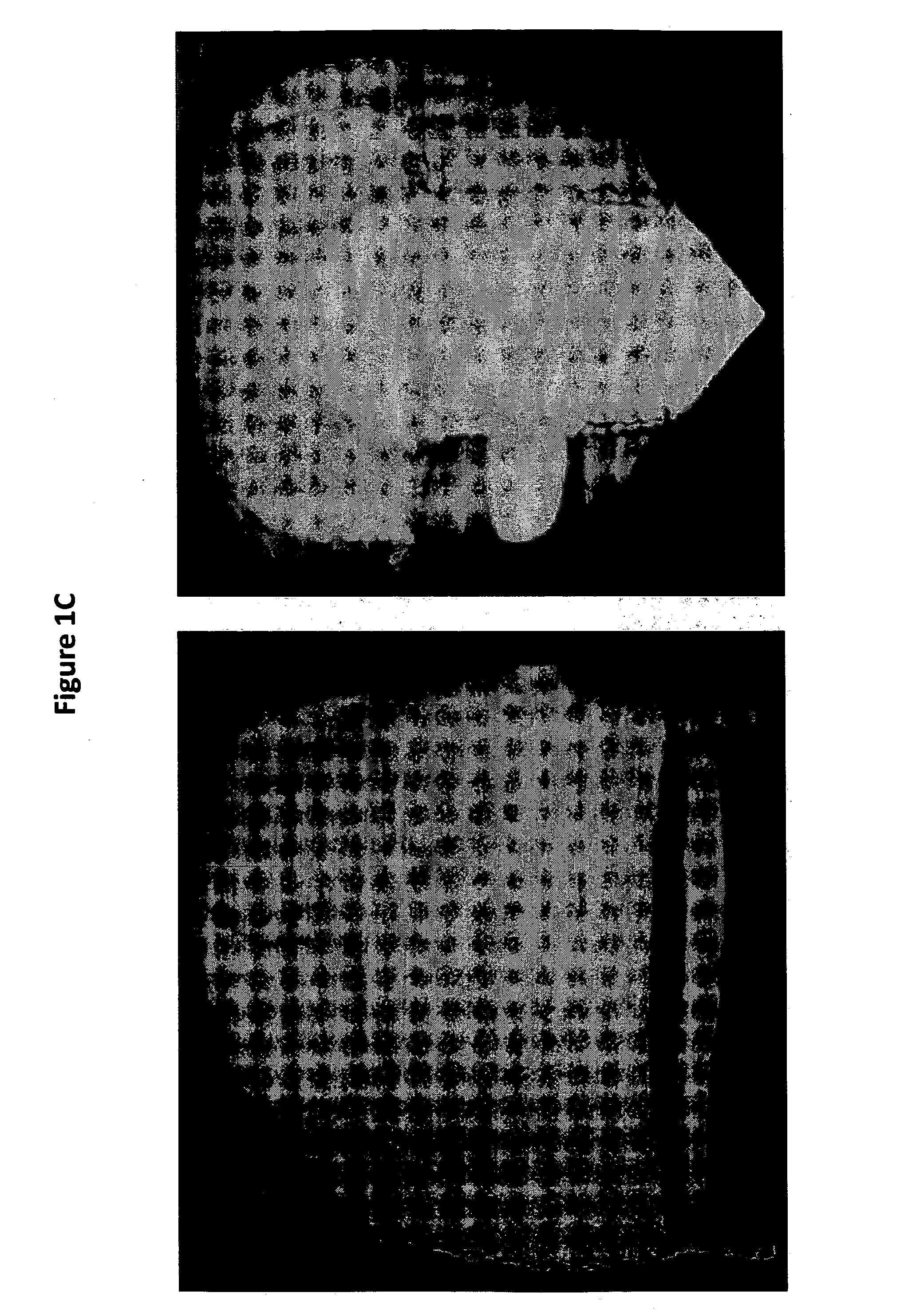Smooth muscle cell constructs
a muscle cell and muscle technology, applied in the field of smooth muscle cell constructs, can solve the problems of abnormal bladder development and surgical augmentation, unsatisfactory current standard of care for pediatric small bowel syndrome, urinary incontinence,
- Summary
- Abstract
- Description
- Claims
- Application Information
AI Technical Summary
Benefits of technology
Problems solved by technology
Method used
Image
Examples
example 1
Peripheral Blood and Adipose Tissue as a Source of SMCs
Blood-Derived Cells
[0445]As described in Ludlow et al. U.S. Published Patent Application No. 20100131075 (incorporated herein by reference in its entirety), smooth muscle cells have been successfully isolated from canine, porcine, and human peripheral blood. All the results described in Example 1 can also be found in Ludlow et al. Briefly, a dilution of 50 ml of peripheral blood 1:1 with phosphate buffered saline (PBS; 100 mL final volume) was prepared and layered onto Histopaque, a density gradient material, and centrifuged at 1,354×g for 20 minutes at room temperature. After centrifugation, four layers will be clearly defined in the density gradient (from top to bottom): serum, buffy coat, Histopaque, red blood cells. The mononuclear cells are located in the buffy coat, which appears as an opaque white / gray band. The buffy coat was withdrawn and transfered into a separate 50 ml conical tube. Dilute to 50 mL with PBS. Centrifug...
example 2
MCP-1 Production and Cell Density
[0466]Conditioned medium from cultures of bladder smooth muscle cells were analyzed using commercially available kits for the detection and quantitation of MCP-1. Conditioned media samples from 9 constructs (3 from each of 3 seeding levels) and the paired SMC cells used for seeding the constructs were tested for MCP-1 levels. The results are shown in Table 2.1.
TABLE 2.1Sam-cMCP-TestplecIL2cIL6cIL101cIFNgcTNFacTGFbIDIDpg / mlpg / mlpg / mlpg / mlpg / mlpg / mlpg / ml1TT11.02TT28.839.6
[0467]In order to quantitate MCP-1 present in the construct medium, an ELISA based assay system specific for Canine MCP-1 from R&D Systems was employed. Samples were assayed in duplicate and compared to a standard curve to provide estimated MCP-1 levels in construct medium. As shown in FIG. 25 of Ludlow et al. U.S. Patent Application No. 20100131075, the results from this analysis show a positive correlation between MCP-1 production and the density of cells seeded. Table 2.2 shows MCP-...
example 3
Adipose-Derived Smooth Muscle Cells Versus Mesenchymal Stem Cells (MSCs)
[0470]Adipose tissue represents a heterogenous cell population composed of endothelial cells, adipocytes, smooth muscle cells and progenitor cells with limited mesenchymal differentiation potential. As described in Ludlow et al. U.S. Published Patent Application No. 20100131075 (incorporated herein by reference in its entirety) and Basu et al. Tissue Eng Part C Methods. 2011 Apr. 2. [Epub ahead of print], quantitative RT-PCR, antigen expression, protein fingerprinting, growth kinetics and functional analysis, to quantitatively evaluate the cellular composition of the adherent, stromal vascular fraction (SVF) derived from human adipose. It was found that media formulation influences enrichment for the smooth muscle cell compartment of adipose SVF. These human adipose-derived smooth muscle cells (Ad-SMC) are phenotypically and functionally distinct from mesenchymal stem cells (MSC) or other adipose-derived progeni...
PUM
 Login to View More
Login to View More Abstract
Description
Claims
Application Information
 Login to View More
Login to View More - R&D
- Intellectual Property
- Life Sciences
- Materials
- Tech Scout
- Unparalleled Data Quality
- Higher Quality Content
- 60% Fewer Hallucinations
Browse by: Latest US Patents, China's latest patents, Technical Efficacy Thesaurus, Application Domain, Technology Topic, Popular Technical Reports.
© 2025 PatSnap. All rights reserved.Legal|Privacy policy|Modern Slavery Act Transparency Statement|Sitemap|About US| Contact US: help@patsnap.com



